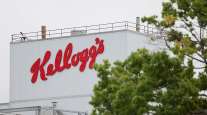UPS Earnings Jump 32.9%
This story appears in the May 3 print edition of Transport Topics.
UPS Inc.’s less-than-truckload unit is headed for a return to profitability in 2010 as part of a companywide increase in earnings, which jumped 32.9% in the first quarter, officials said last week.
UPS Freight “showed solid improvement over last year” in the first quarter, said Kurt Kuehn, chief financial officer for the Atlanta-based package delivery company. He added, “We expect it to be profitable for the year.”
UPS Inc. reported that it netted $533 million in the first quarter, up from $401 million a year ago, after charges in each of those quarters. Excluding the one-time charges, net income rose 37% to $708 million from $517 million last year.
Kuehn referred to the upbeat projections for UPS Freight as UPS reported details of the sharp increase in net income for the period first announced April 14 (4-19, p. 2).
On April 27, the package corporation reported details of the company’s performance, which it said was powered by stronger profits in the domestic and international package units that deliver 95% of profits.
The less-than-truckload unit raised its revenue by 8.4% to $492 million but still operated at what the company said was “a slight loss.” UPS said in February that the LTL unit had a “small operating loss” last year because of the recession, although it didn’t specify how much.
LTL revenue per 100 pounds of freight shipped rose 9.5% to $18.94 in the first quarter, accelerating from the fourth quarter of 2009, when the year-over-year increase was 2.9%. First-quarter LTL shipments handled fell 2% from year to year.
UPS Inc. earnings for 2010, excluding charges and gains, are projected between $3.05 a share and $3.30 a share, the company said April 14. That estimate was an increase of at least 25 cents a share over its prior forecast and could result in an increase of as much as 43% in earnings this year over 2009 levels.
“With global economies showing signs of recovery and UPS’s strong start to 2010, we are optimistic about this year and the future,” Kuehn said on April 27, crediting its international freight network for a sharp rise in profit margins.
“UPS remains well-positioned to drive better operating margin expansion during this cycle, given numerous points of leverage (more disciplined industry pricing, improving shipment weights, permanent cost takeouts),” Robert W. Baird analyst Jon Langenfeld wrote in an April 27 investor report.
“We’re very confident that our diversified, global product portfolio will help us capitalize on the growth opportunities ahead,” Kuehn said. “We expect first-quarter trends to continue through the year, producing revenue growth and additional operating leverage.”
International package revenue, shipments and profit rose, reflecting the global economic recovery.
Revenue gained 18%, shipments rose by the same amount and operating profit climbed 45% to $427 million.
The operating ratio for the unit improved to 83.8 from 86.9.
Shipments from the United States rose 9%.
On the domestic package side, the operating ratio improved to 92.1 from 94.5, including the effects of charges.
The improvement was cost-related because operating profit of $562 million was $178 million higher than the 2009 period. That improvement outpaced the revenue rise of $153 million to $7.10 billion.
The company said that average volume per day rose for the first time in two years, and revenue per piece gained 2% because of higher base rates and fuel surcharges.
Results for the LTL unit are included in the supply chain and freight segment of the company.
In that business, operating profit rose 33% to $53 million as margins improved to 2.7% from 2.3%. The improvement was credited to strength in the health-care and high-technology businesses served by that unit.
In addition to announcing earnings, UPS said it completed air hub expansions that increased package sorting capacity by 19% to 416,000 an hour and introduced a new system intended to eliminate driver stops when no package is ready for pickup.




